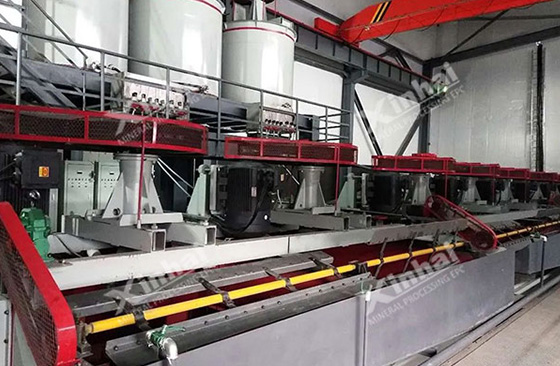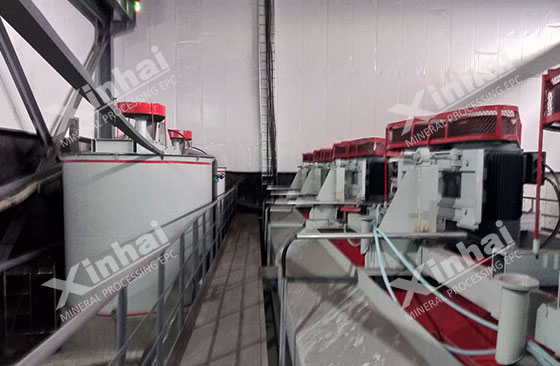In the flotation process, useful minerals are typically separated from gangue minerals through the selective attachment to air bubbles, which are then removed with the foam. Conversely, reverse flotation involves the removal of gangue minerals with the foam, while the useful minerals remain in the flotation cell's bottom.
For magnetite concentrates, which often contain high levels of silica and sulfur, flotation can be employed to produce a more suitable concentrate for blast furnace smelting or direct reduction iron (DRI). By using flotation early in the grinding process, the quality of the concentrate can be improved, reducing both the grinding capacity and power consumption.
Use the table of contents below to navigate through the guide:
01Characteristics of the Magnetite Concentrate

In this case, the magnetic concentrate of the plant consists of 50% to 60% quartz. Fine quartz occurs as a single entity, while coarser quartz is intergrown with magnetite. To address these issues, Xinhai has designed three flotation methods tailored to the specific characteristics of the ore:
1. Anionic Collector for Iron Minerals in Acidic Media: This method targets the flotation of iron minerals using an anionic collector in acidic conditions.
2. Anionic Collector for Quartz in Alkaline Media: Quartz is floated using an anionic collector in alkaline conditions.
3. Cationic Collector for Gangue Minerals: A cationic collector is used to float gangue minerals.
02Optimal Flotation Process
After experimental studies, the magnetite reverse flotation process was selected due to its superior performance compared to anionic reverse flotation. In this process, Lilaflot collector is used as the cationic collector. Increasing the dosage of Lilaflot collector to 30-50 g/t enhances the iron grade of the concentrate to 69.90%, with silica content reduced to 2.80%. This concentrate is suitable for direct reduction iron production.

03Addressing Sulfur Content
Sulfur content is a crucial quality indicator in magnetite concentrate. In the magnetite reverse flotation process, sulfur may be present as iron pyrite and hexagonal magnetic pyrite. During wet magnetic separation in a weak magnetic field, these sulfur forms are discharged into the tailings. However, sulfur remaining in magnetic pyrite with strong magnetism requires further treatment.
To reduce sulfur content, Xinhai employs a specialized flotation process for removing Orpiment ore from the concentrate. Sodium butyl xanthate is used as the collector, and bluestone acts as an activator for magnetic pyrite. This process successfully reduces sulfur content to 0.13%-0.06%, achieving a sulfur removal rate of 74% to 80%.
The optimized flotation process significantly improves the quality of magnetite concentrate by reducing silica and sulfur content, making it suitable for high-grade applications such as direct reduction iron production. Through the use of targeted flotation methods and specialized collectors, Xinhai ensures efficient and effective processing of magnetite ore.


 marketing@ytxinhai.com
marketing@ytxinhai.com  0086 13810327080
0086 13810327080 






































































































 CHAT
CHAT MESSAGE
MESSAGE




